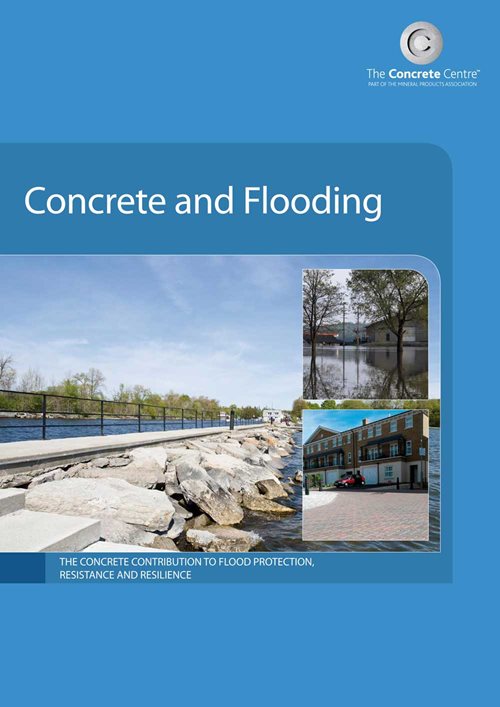Flood resilient homes
Flood resilient homesBritish Standard BS 85500: Flood resilient construction –Improving the flood performance of buildings was first published in 2015, and the latest revision was published in 2025. This standard has been published providing design guidance for buildings at risk of flooding and makes recommendations that highlight where flood resilience and resistance that can be achieved with concrete construction.
Recommendations are made for wall and floor constructions as well as other design decisions based upon the predicted height and duration of the flood. Concrete and masonry solutions appear throughout as recommended solutions for construction, irrespective of the type of flood predicted.
In BS 85500, a ground-bearing cast in-situ concrete floor remains the recommended ground floor construction for buildings at risk of flooding. This comprises a minimum 150mm concrete slab over a robust, continuous damp proof membrane with appropriate closed cell insulation. Although the preferred location of the insulation relative to the slab is not stated definitively, the example illustrated features a solution with the insulation above the slab. Suspended concrete floors are stated as an option to be considered where ground conditions or other site specific issues dictate.
Solid wall construction, with external insulation and render is stated by BS 85500 as a recommended external wall construction, with the clear advantage of having no cavity or voids located within the wall construction. This type of wall can be simply achieved using masonry, as illustrated in BS 85500, but can also be achieved using precast concrete or in-situ concrete, be it cast into standard formwork or as part of an insulating concrete formwork (ICF) system.
Cavity walls are also a recommended solution, with both inner and outer leafs constructed in masonry and with external render and internal render or plaster. Specific guidance for material selection and specification of the details are provided including the use of closed-cell insulation.
Timber-framed walls are ‘not recommended for a water exclusion strategy’ (BS 85500) and ‘generally not recommended’ (BS 85500) for a water entry strategy unless materials are to be stripped from the walls to allow them to dry. The potential for fungal growth, decay, warping and distortion are all listed as potential impacts when timber frame is in contact with water.
BS 85500 also provides advice on hazards and impacts for a range of construction solutions and materials, but the clear message is of the flood resilient performance benefits of concrete walls and floor construction.
Concrete and Flooding
